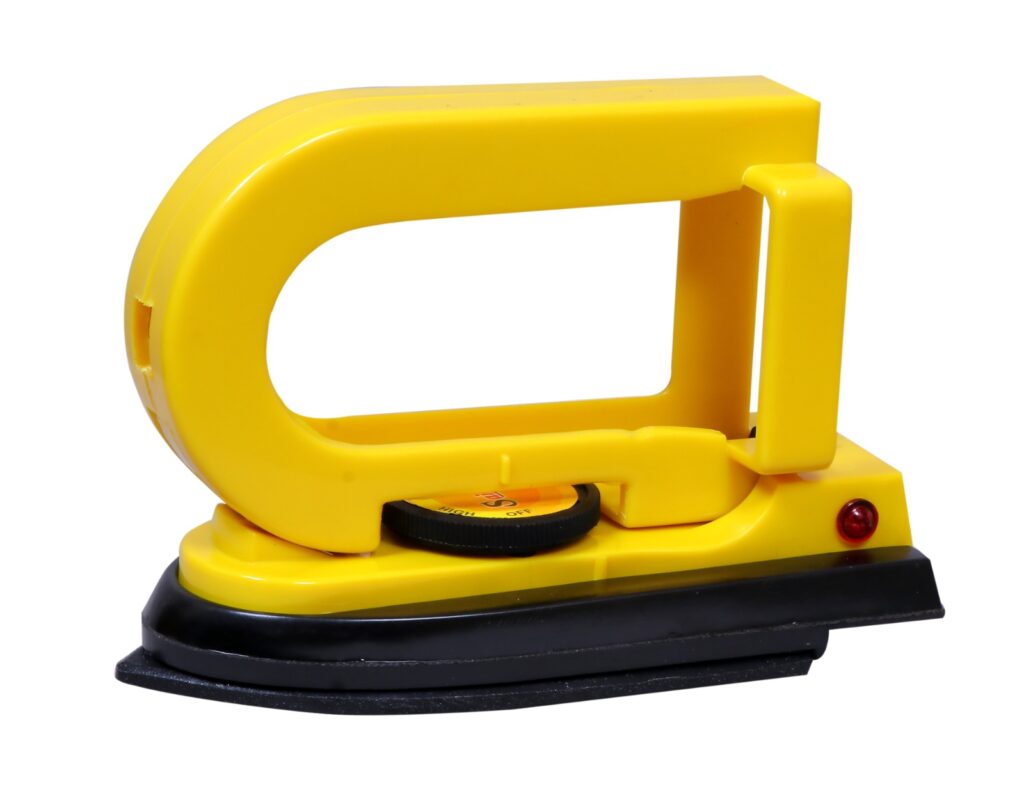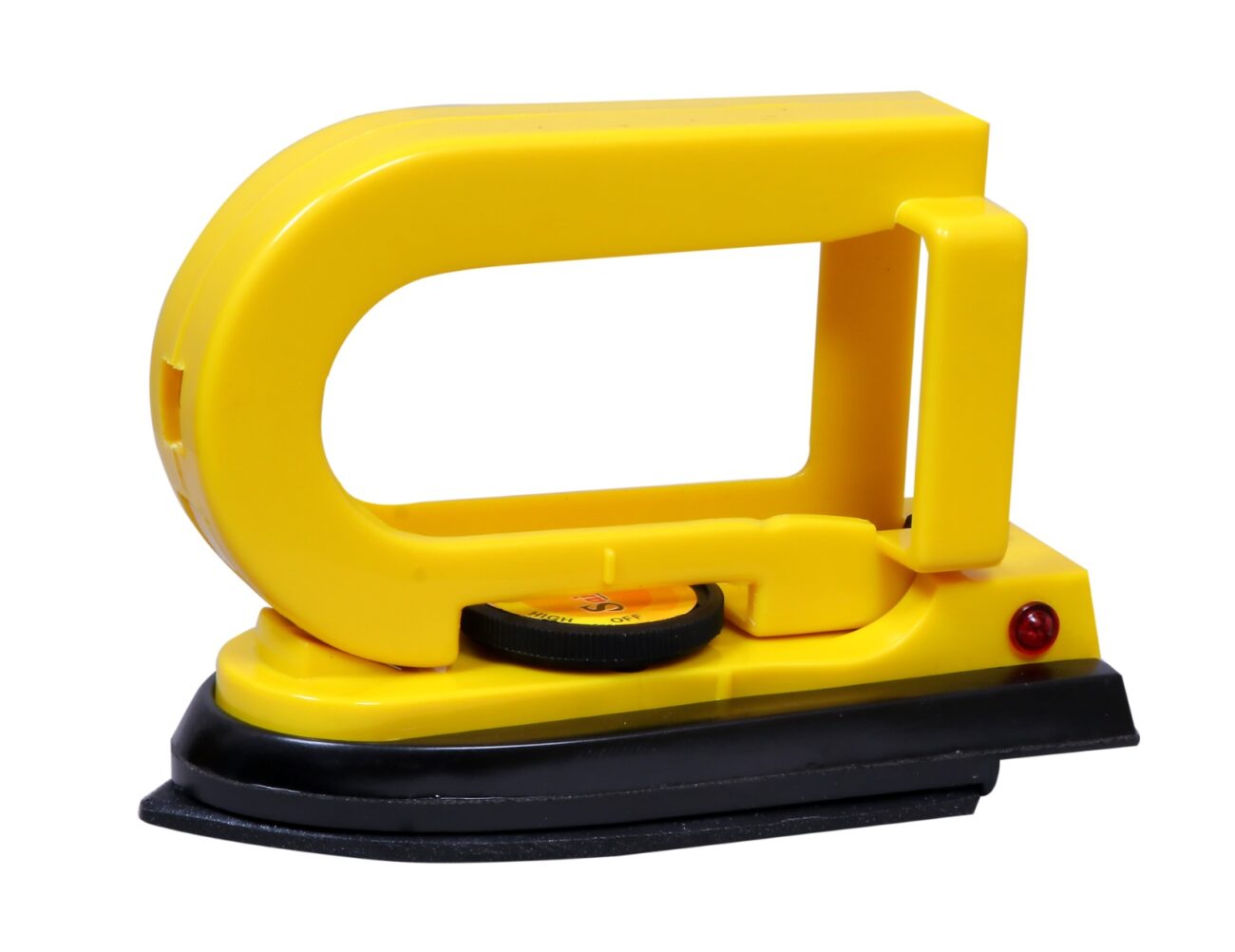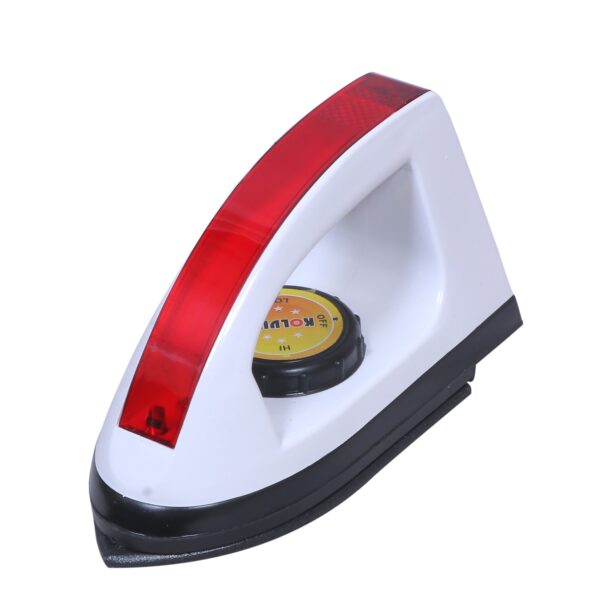
The Humble Hero of Your Wardrobe: Understanding the Clothes Iron
Clothes Iron In a world increasingly dominated by high-tech gadgets, the humble clothes iron might seem like a relic of the past. Yet, this unassuming appliance remains an indispensable tool for anyone who values a neat and presentable appearance. More than just a means to remove wrinkles, the clothes iron is a silent partner in maintaining our confidence and the longevity of our garments. Let’s delve into the world of this essential household item.
At its core, a clothes iron is a device designed to smooth out creases and wrinkles from fabric using a combination of heat and pressure. While the basic principle has remained consistent over time, modern irons have evolved significantly, incorporating features that make the task easier, safer, and more effective.
| Category | Feature/Concept | Description | Importance Level |
| Core Function | Wrinkle Removal | Smooths out creases in fabric using heat and pressure, often aided by moisture (steam or spray). | High |
| The Science | Heat & Fiber Relaxation | Heat softens fabric fibers, allowing pressure to realign molecules and remove wrinkles. Cooling sets the new, smooth configuration. | High |
| Role of Moisture | Steam or water spray helps relax fibers further, improving wrinkle removal, especially for stubborn creases. | Medium to High | |
| Key Components | Soleplate | The heated base that contacts the fabric. Material (non-stick, ceramic, stainless steel) affects glide and heat distribution. | High |
| Heating Element | Converts electricity into heat to warm the soleplate. | High | |
| Temperature Control | Allows selection of appropriate heat levels for different fabric types, preventing damage. | High | |
| Water Tank (Steam Irons) | Reservoir for water used to generate steam. Capacity varies. | Medium to High | |
| Steam Vents | Openings on the soleplate through which steam is released. | Medium to High | |
| Handle | Designed for comfortable and secure grip during ironing. | Medium | |
| Cord (or Cordless Base) | Connects to power source; cordless models offer greater maneuverability. | Medium | |
| The Power of Steam | Enhanced Wrinkle Removal | Steam significantly improves the ability to remove wrinkles compared to dry heat alone. | High |
| Deeper Penetration | Steam can penetrate fabric layers more effectively for thorough smoothing. | Medium to High | |
| Vertical Steaming | Ability to steam hanging garments, curtains, etc., offering versatility beyond traditional ironing. | Medium | |
| Choosing the Right Iron | Frequency of Ironing | Impacts the need for durability and advanced features. Frequent ironing may warrant a higher-quality model. | Medium |
| Fabric Types Ironed | Determines the importance of precise temperature control and steam adjustability. | Medium to High | |
| Budget | Influences the available features and build quality. | High | |
| Weight & Ergonomics | Affects comfort during use, especially for longer ironing sessions. | Medium | |
| Special Features | Auto shut-off (safety), anti-drip (prevents water spots), self-cleaning (maintenance) are important considerations. | Medium to High | |
| Beyond Ironing | Crafting | Used for fusing fabrics, applying heat transfers, and creating textures in various crafts. | Low |
| Quick Drying (Caution) | Can be used carefully on low heat to dry slightly damp items, but risks scorching. Requires extreme caution. | Low | |
| Limited Sanitizing | High heat can kill some surface bacteria, but not a substitute for proper washing. | Low | |
| Overall Significance | Maintaining Appearance | Essential for presenting a neat and professional image. | High |
| Garment Longevity | Proper ironing can help maintain the shape and appearance of clothes over time. | Medium |
The Science Behind the Smoothness:
Wrinkles in fabric occur when the long chains of molecules that make up the fibers become bent and tangled. The heat from the iron softens these fibers, making them more pliable. As you press the iron across the fabric, the weight and pressure applied realign these molecules, essentially “ironing out” the bends and setting them in a smoother configuration as the fabric cools. Sometimes, a little moisture in the form of steam or a spray of water helps to further relax the fibers, making them even more receptive to the heat and pressure.
While designs may vary, most clothes irons share these fundamental components:
- Soleplate: This is the smooth, heated base of the iron that comes into direct contact with the fabric. The material of the soleplate (like non-stick, ceramic, or stainless steel) significantly impacts how easily the iron glides and how evenly heat is distributed.
- Heating Element: Located inside the iron, this element converts electrical energy into heat, warming the soleplate to the desired temperature.
- Temperature Control: This allows you to select the appropriate heat setting for different fabric types, preventing scorching or damage. Modern irons often have clear markings or digital displays indicating fabric types.
- Water Tank (for Steam Irons): Many irons now include a reservoir for water that is heated to create steam.
- Steam Vents: Small openings on the soleplate through which steam is released onto the fabric.
- Handle: Designed for comfortable grip and maneuverability.
- Cord: Connects the iron to a power outlet. Some irons are now cordless for greater freedom of movement.
Why Steam is Your Iron’s Best Friend:
The introduction of steam revolutionized ironing. Steam offers several advantages:
- Enhanced Wrinkle Removal: The moisture from steam helps to relax the fabric fibers more effectively than dry heat alone, tackling even stubborn creases.
- Deeper Penetration: Steam can penetrate deeper into the fabric layers, ensuring a more thorough smoothing effect.
- Versatility: Steam irons can often be used vertically to steam hanging garments, curtains, and upholstery, offering a convenient alternative to traditional ironing for certain items.
Choosing the Right Iron for Your Needs:
With a wide array of irons available, selecting the right one depends on your individual needs and ironing habits. Consider these factors:
- Frequency of Ironing: If you iron frequently, investing in a durable and feature-rich iron might be worthwhile.
- Types of Fabrics You Iron: Different fabrics require different heat settings and steam levels. Look for an iron with a wide temperature range and adjustable steam control.
- Budget: Irons range in price from basic models to high-end options with advanced features. Determine your budget and prioritize the features that are most important to you.
- Weight and Ergonomics: A lighter iron with a comfortable grip can make longer ironing sessions less tiring.
- Special Features: Consider features like auto shut-off for safety, anti-drip systems to prevent water spots, and self-cleaning functions for convenience.
Beyond Wrinkle Removal: Other Uses for Your Iron:
While its primary function is smoothing clothes, a clothes iron can also be surprisingly versatile:
- Crafting: Used in various crafts like fusing fabrics, applying heat transfer vinyl, and creating unique textures.
- Quick Drying (with caution): In a pinch, a low heat setting can carefully help dry slightly damp items, but this requires extreme caution to avoid scorching.
- Sanitizing (to a limited extent): The high heat can help kill some surface bacteria on fabrics, although it’s not a substitute for proper washing.
The Enduring Appeal of a Well-Pressed Garment:
In conclusion, the clothes iron is more than just a heat-emitting tool. It’s an essential element in maintaining a polished appearance, extending the life of our clothes, and even finding unexpected uses in our daily lives. While technology continues to advance, the satisfaction of slipping into a perfectly pressed shirt or admiring a wrinkle-free drape remains a timeless pleasure, all thanks to this humble hero of our wardrobes. Understanding its function and the features available allows us to choose the right companion for achieving that crisp, clean look we desire.




Leave a comment